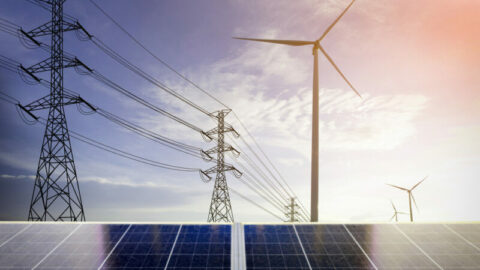An Australian Renewable Energy Agency (ARENA) funded study by the Australian National University (ANU) has identified over 22,000 sites across Australia with the potential for pumped hydro energy storage, which can be used to support a secure and cheap national electricity grid with 100 per cent renewable energy.
The zero-emissions grid would mainly rely on wind and solar photovoltaic (PV) technology, with support from pumped hydro storage, and would eliminate Australia’s need for coal and gas-fired power.
Lead researcher, Professor Andrew Blakers, said the short-term off-river pumped hydro energy storage (STORES) sites combined had a potential storage capacity of 67,000 Gigawatt-hours (GWh) – much more than the capacity required for a zero-emissions grid.
“Australia needs only a tiny fraction of these sites for pumped hydro storage – about 450GWh of storage – to support a 100 per cent renewable electricity system,” said Professor Blakers from the ANU Research School of Engineering.
The STORES study located more than 12,000 sites in Victoria and NSW, the two states with the most suitable potential upper reservoirs.
All the potential sites identified are outside of national parks and away from urban areas and away from rivers.
Off-river pumped hydro storage requires pairs of reservoirs joined by a pipe with a pump and turbine. Water is then pumped uphill when wind and solar energy is plentiful, and electricity is available on demand by releasing the stored water through a turbine.
Professer Blakers said fast tracking the development of a few of the best sites by 2022 could balance the grid when Liddell and other coal power stations close.
“Pumped hydro storage, including Snowy 2.0, can be developed fast enough to balance the grid with any quantity of variable wind and solar PV power generation, including 100 per cent renewable energy,” Professor Blakers said.
“We found so many good potential sites that only the best 0.1 per cent will be needed. We can afford to be choosy.”
On behalf of the Australian Government, ARENA provided a $449,000 grant to support the STORES study which aims to map an nation-wide atlas of potential off-river pumped hydro locations.
A publicly available cost model of pumped hydro is also under development.
The number of potential pumped hydro sites in each state are shown in the table below:
Further work is required to determine which sites are suitable for potential development.
| Approximate number of sites | Approximate energy storage capacity (GWh) | Minimum head (m) | |
| NSW/ACT | 8,600 | 29,000 | 300 |
| Victoria | 4,400 | 11,00 | 300 |
| Tasmania | 2,050 | 6,00 | 300 |
| Queensland | 1,770 | 7,00 | 300 |
| South Australia | 185 | 500 | 300 |
| Western Australia | 3,800 | 9,000 | 300 |
| Northern Territory | 1,550 | 5,000 | 300 |
| TOTAL | 22,000 | 67,000 | 300 |
Head refers to the minimum altitude difference between potential upper and lower reservoirs in the data set – larger is generally better. All identified sites are outside
national parks and urban areas.
ARENA CEO, Ivor Frischknecht, said the study was the first step to exploring the potential for pumped hydro energy storage, as part of ARENA’s focus on flexible capacity to ensure a smooth transition to a renewable energy future.
“Energy storage is an increasingly important part of our electricity system as it allows us to ensure energy is always available even when the sun and wind are not,” Mr Frischknecht said.
“Pumped hydro is the most common and most mature form of energy storage. We are exploring the potential for pumped hydro to play a greater role in delivering Australia’s electricity needs. The findings of this study prove there are opportunities across Australia worthy of further investigation.”
















